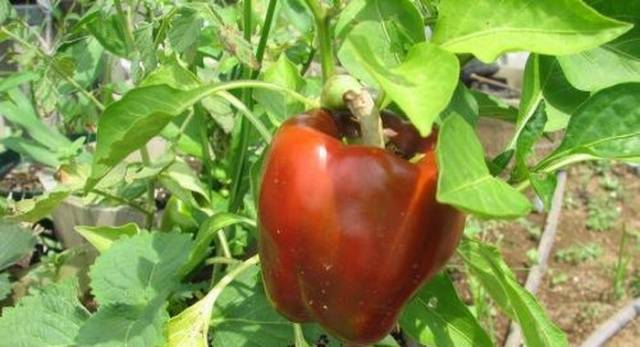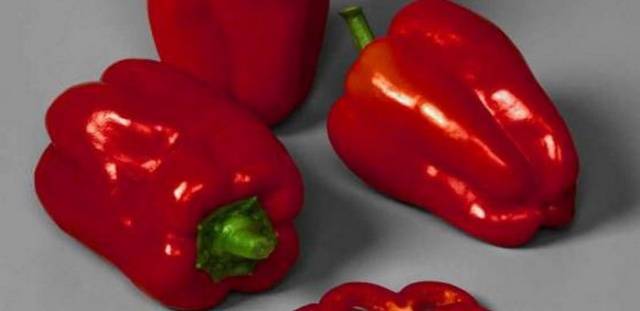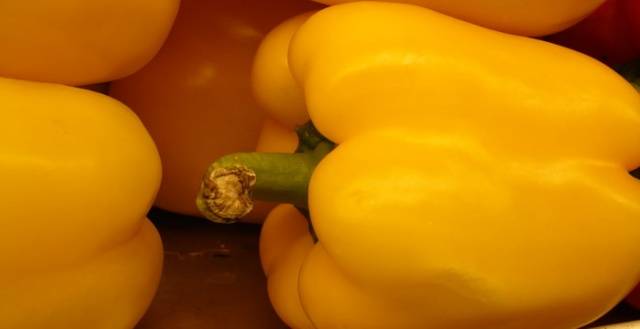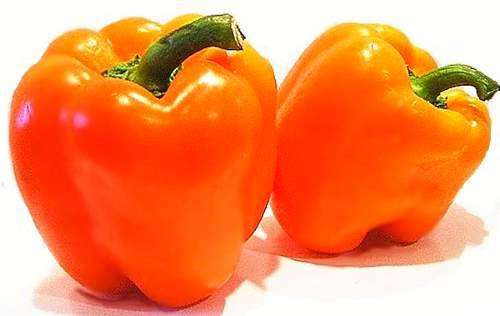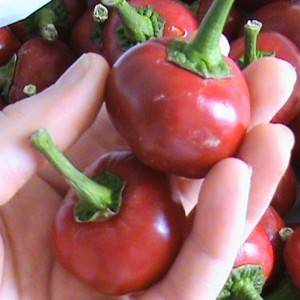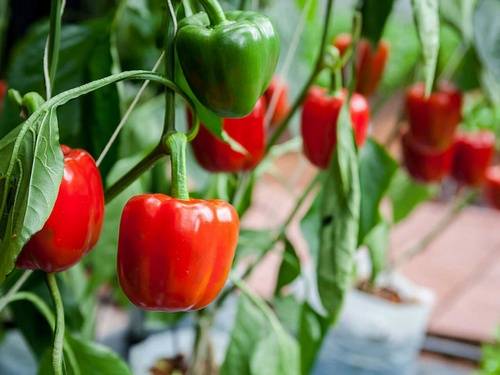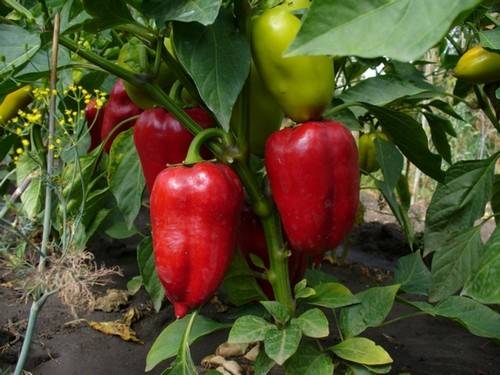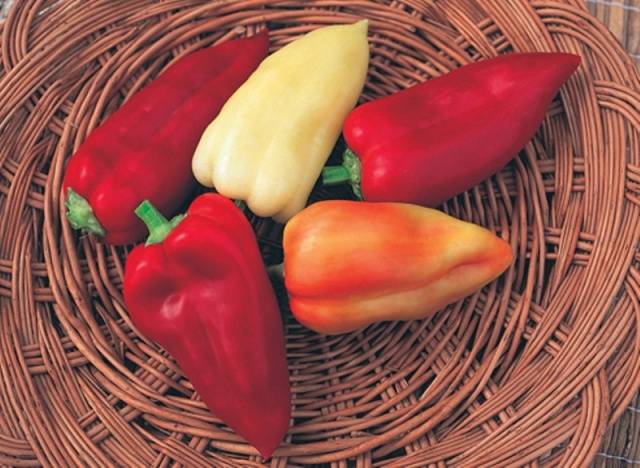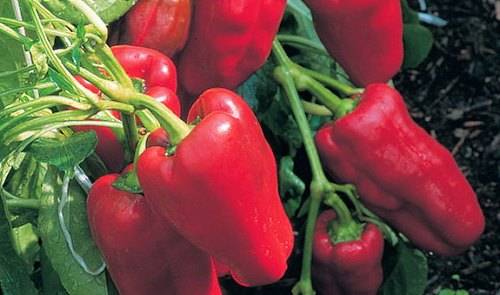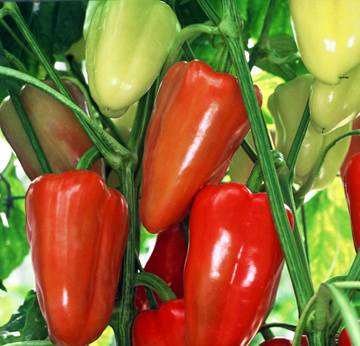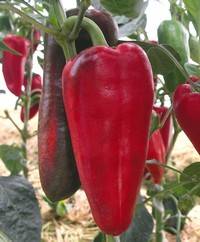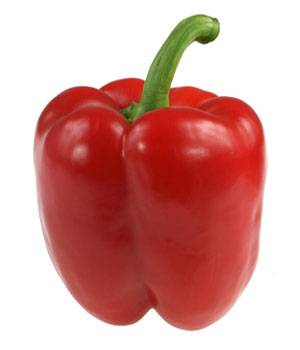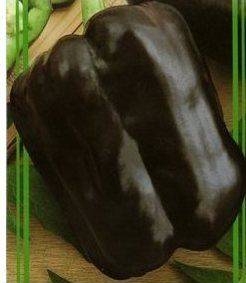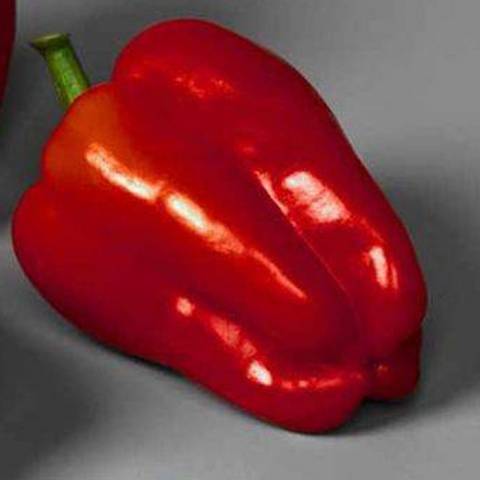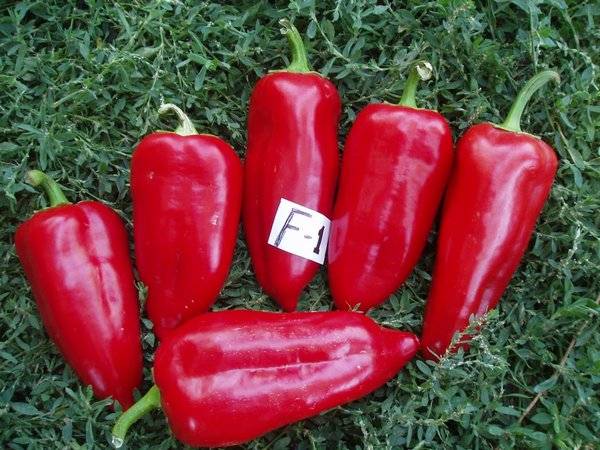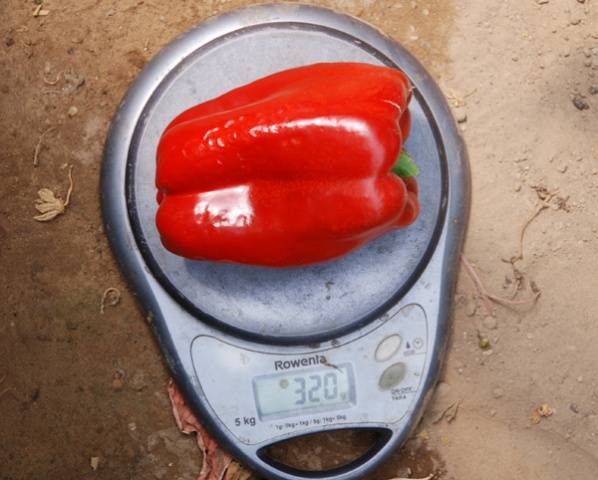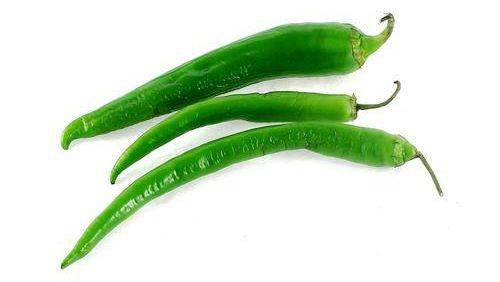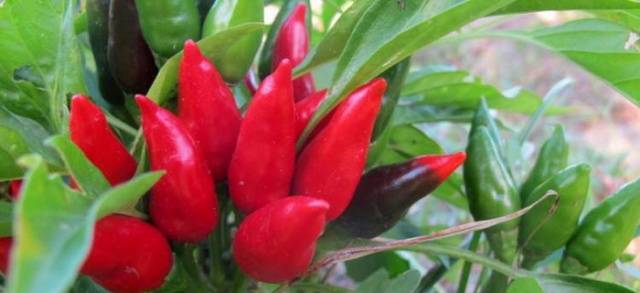Content
- 1 What is a variety
- 2 What is a hybrid
- 3 What kind of sweet pepper to give preference
- 4 Popular and purchased sweet pepper varieties
- 5 The best varieties of hot Dutch pepper
- 6 Hot Dutch pepper varieties
- 7 Conclusion
Sweet pepper, aka Bulgarian, aka paprika, is called sweet for a reason. Despite the fact that this is a pepper, there is absolutely no spiciness in it, which is why we love sweet peppers so much! It is perfect in salads, soups and hodgepodge, in winter preparations, pickled and frozen. At one glance at this large, thick-walled handsome man there is an irresistible desire to immediately sink his teeth into him and bite off a large, juicy piece. And all because Dutch pepper is not only beauty and aesthetics, but also health!
Few people know that in terms of vitamin C content, it is far ahead of lemon, and it contains more carotene than in carrots, not to mention the rarest vitamin P, which is involved in the assimilation of ascorbic acid, which leads to the removal of cholesterol plaques from blood vessels, helps work of the heart and gives the vessels elasticity.
The daily dose of vitamin C is contained in just one large pepper. Vitamins B1, B6 and B12, found in bell peppers, help improve memory.
Thanks to these qualities, bell peppers have become so popular in household plots.
The climate of central Russia makes it possible to grow Dutch pepper varieties only through seedlings, since the summer in this region is somewhat shorter than their ripening period. Therefore, it is so important to use early and mid-early varieties or hybrids. Some gardeners are confused about the difference between a variety and a hybrid and don't know which Dutch sweet pepper seeds they should buy.
What is a variety
The variety is obtained as a result of selection - a long, laborious and complex scientific process. During the breeding of the variety, the best representatives of the resulting plant are selected for further work with them. For a certain climatic zone, a variety is developed that is adapted precisely to these conditions. The key difference from the hybrid is that seeds can be harvested from the fruits of varietal peppers to reproduce the same variety with the same taste and characteristic external characteristics. The strongest, tallest, most developed fruits are best suited for collecting seeds.
What is a hybrid
A hybrid is obtained by crossing different varieties and types of plants. It takes from its "parents" the advantages of self-pollination, early maturity, resistance to climatic conditions, etc. The first generation of the hybrid (F1) gives the greatest effect on these properties, but, unfortunately, neither the second nor the third generation in hybrids can not be. Of course, if you sow hybrid seeds, they will sprout and the plants will bear fruit, only such fruits will not be needed by anyone, since the "parental" qualities will not be transferred to them. By the way, plants obtained from hybrid seeds reproduce vegetatively, then the "parental" traits will remain, but the seeds will still be useless.Dutch pepper seeds are absolutely indistinguishable from other pepper seeds in appearance. True, there is one difference - the seeds of hybrids from Holland are a little more expensive, but it's worth it.
Dutch pepper varieties are so diverse that many gardeners are lost and do not know which variety to give preference to. After all, I would like to see something extraordinary on the site, so that the neighbors would be envious! And at the same time it was delicious and healthy. Someone cares about the aesthetics of salad preparation, and he prefers red, yellow and purple peppers; for someone more important is a high yield for winter harvesting. Some people want to see thick, fleshy paprika on their table; others like thin-walled peppers. Therefore, it is worth trying different varieties of Dutch peppers in order to decide over time and find the best variety for growing on your site.
What kind of sweet pepper to give preference
Of course, this should be an early or mid-early variety if it is supposed to be grown in central Russia. Before planting in the ground, the seedlings must be at least 80 days old. Lovers of raw sweet peppers should take a closer look at thick-walled white and yellow varieties; round varieties are more suitable for stuffing; multi-colored hybrids will decorate winter preparations and salads. Here you need to take into account that the sweetest of the Dutch peppers is red, and in terms of the content of vitamins, it is in the lead.
You should take a note: the more the pepper weighs, the more juice it contains, and hence the taste and vitamins.
Popular and purchased sweet pepper varieties
The ripening rate and yield of pepper depends on the methods of cultivation. Bell peppers are mostly grown in greenhouses or in a greenhouse that is harvested after the fruit has emerged. Dutch greenhouse peppers are very popular because they are usually early maturing. Typically, Dutch sweet pepper seed packages contain an indication of the ripening period of the fruit from the time of full seedling emergence. This allows you to correctly calculate the sowing date for seedlings.
New varieties of early sweet peppers
"Sweetie"
Bright red small fruits, their weight does not exceed 50 grams, they look like small balls, sweet, thick-walled, very loved by children. About a kilogram of peppers can be removed from a small, neat bush. It is grown both in a greenhouse and on a windowsill in a flower pot.
"Eroshka"
Fruits are orange-red, rather large (≈150-180 grams), resemble a cube in shape, the wall thickness is about 5 mm, the bush is compact, low (40-50 cm), very productive - from 10 to 16 fruits can be harvested from one bush. It grows not only in a greenhouse, but also in open ground.
"Funtik"
The color of the fruits is green, turning into red, the weight of one fruit reaches 180 grams, the wall thickness is about 7 mm, a pronounced peppery taste and a friendly return of the harvest, there can be up to 18 peppers on one bush. The bush has dense foliage, reaches a height of 70 cm. It is very popular with gardeners.
"Czardas"
The fruits are yellow-orange to orange-red in color and can be eaten at any stage of ripening. Very large, the weight of one pepper reaches 220 grams, from one square meter you can get up to ten kilograms of product.
"Buratino"
Hybrid variety, extremely early, red fruit, weighing about 120 grams, with a wall thickness of about 5 mm. The bush reaches a height of ≈1 meter. The main difference from other varieties is suitability for transportation, therefore, it may be of commercial interest.
Review of the variety Czardash
Low-growing varieties of Dutch pepper
They are good because the bushes do not grow very tall and do not require a garter, which makes caring for the plants more convenient:
- "Belozerka";
- "Morozko";
- "Swallow";
- Novosibirsk;
- "Belladonna";
- "Oda" and others.
Two varieties of sweet peppers in the undersized group are especially popular with vegetable growers in central Russia - they are Gypsy F1 and Tamara F1:
"Gypsy F1"
This super early unpretentious Dutch pepper hybrid is very well adapted to the climatic conditions of the region, as it has been tested in the area of risky farming. It always gives a good yield, the fruits are not too large with a wall thickness of up to 5 mm. It begins to ripen on the sixtieth day after planting in open ground. Differs in special sweetness and pulp aroma.
"Tamara F1"
Ultra-early hybrid with dense, shiny, thick-walled (up to 8 mm) fruits weighing up to two hundred grams. Differs in good fruit set and wonderful taste: juiciness and sweetness. Recommended for growing not only in the greenhouse, but also in the open field.
Low-growing sweet peppers Dutch breeding are good in that they do not require special care in terms of a garter and they feel great not only in a greenhouse, but also in open ground. True, before planting them in open ground, it is advisable to make a warm bed, as, for example, they do for growing cucumbers, that is, using manure or any other organic matter. In terms of the rate of fruit ripening, undersized varieties are leaders, the only disadvantage for lovers of "plump" peppers, they should not expect a thick wall - this is a feature of these early varieties.
Review of the Gypsy variety
Among the most popular undersized varieties for open ground are these varieties:
"Corvette"
Early, bright red conical fruits are small (up to 80 grams), rather high yield;
"Mirage"
It ripens early, the fruits are fleshy, conical in shape, weighing up to 110 grams, the color is white, smoothly turning into orange, then red, depending on maturity, very beautiful in salads;
Atlantic F1
Dark red elongated fleshy fruits reach incredible sizes weighing up to half a kilogram.
"California miracle"
The "California Miracle" can be safely ranked among the best varieties of sweet peppers - it belongs to the mid-season varieties, the ripening period is from 100 to 130 days. Pepper is large (up to 130 grams), cuboid, thick-walled (up to 7 mm). Distinctive features are long fruiting and the ability to obtain seeds with one hundred percent germination.
Review of the variety California miracle
Long-fruiting sweet peppers
These are tall varieties of peppers for greenhouses, since in central Russia they simply do not have time to ripen in the open field and require a garter.
"Cardinal F1"
An early ripe hybrid with a trunk height of up to one meter, with large, fleshy fruits from green to purple;
"Claudio"
Belongs to the Dutch varieties of peppers for greenhouses, the height of a branchy and powerful bush is about 1.3 meters, large dark red fruits reach a weight of 250 grams, has good resistance to almost all diseases;
Atlant
Compared to "Claudio", a rather undersized plant (up to 80 cm) with large fleshy fruits from green to red, has excellent taste and juiciness;
"Cockatoo"
To grow this pepper, much more space will be required, since its height reaches 1.5 m, an early ripe variety, the color of the fruits is red, and the weight of the fruit is about half a kilogram;
"Hercules"
Very beautiful, dense fruits weighing up to 0.3 kg, mid-ripening variety, does not lend itself to diseases, very easy to keep, tolerates transportation well, therefore it is of commercial interest;
"Latinos"
A mid-season hybrid with red fleshy fruits weighing up to 0.2 kg and a trunk height of up to one meter, the yield is very high: from 1 sq. m you can take 8-14 kg of beautiful fruits.
Everyone knows that color loss can also be the result of heat treatment. Therefore, it is best to freeze purple peppers, even whole or chopped, so that they can be used for making salads in winter, mixing them with fruits of other bright colors.
The best varieties of hot Dutch pepper
Bell peppers are closely related to pungent peppers. chilli... Both contain capsaicin. This alkaloid, in addition to giving the pepper pungency and pungency, makes malignant cells die massively, that is, it helps in the fight against cancer. With the help of capsaicin, the work of the stomach and pancreas is stimulated, appetite is stimulated, blood pressure decreases, blood thinns, which helps to avoid the formation of blood clots.
A whole group of different hot peppers, which differ in color, size and hotness, are united by one name - Cayenne pepper. "A gift to humanity" - this is how scientists called this pepper, having studied its useful properties.
Spicy lovers can be advised such varieties of hot peppers from Holland as:
"Chilean heat"
An early variety with bright red, glossy fruits (about 20 cm long), can grow both in a greenhouse and outdoors, not very spicy to taste, with a strong peppery aroma;
"Hungarian pepper"
Ripens in 85-90 days, the bush is compact, undersized (up to 45 cm), with smooth, conical fruits weighing up to 40 grams, with a wall thickness of 3-4 mm, from yellow to red. Medium-sharp taste.
"Superchili"
High-yielding, early, very pungent, bitter and pungent hybrid, fruits are large enough (about 7 cm) weighing 15-25 grams. The bush is not too tall, about 50-60 cm high, the color of the fruit changes depending on maturity: green - orange - cherry red. To avoid cross-pollination, this variety should not be grown next to other, especially sweet, peppers.
It is very convenient: all year round fresh peppers are at hand, especially since hot peppers are a perennial plant that can grow for 5 or even 10 years, depending on the correct care.
Hot Dutch pepper varieties
All these peppers will delight with their harvest for more than one year:
- "Ogonyok";
- Salsa Orange;
- "Variegatta";
- Pearl Tiger;
- Explosive Amber;
- "Laminada";
- "Small miracle";
- Aladdin.
Conclusion
Due to the fact that different varieties of sweet peppers have different ripening times, you can make sure that fresh peppers are present on the table from spring to late autumn. You just need to plant several bushes of different ripening periods.And if one of the varieties for home cultivation grows on the site, then it can be carefully transplanted into a pot and grown on a windowsill to get fresh pepper until mid-winter.
Even in the spring, when buying seeds, it is better to choose pepper varieties that are resistant to diseases, bad weather conditions, which are capable of producing abundant crops in both dry and rainy, cool summers.
Undoubtedly, a rich harvest largely depends on the quality of the seed. But you will also need knowledge of the conditions for growing sweet Dutch peppers, its needs, whims and sores.
